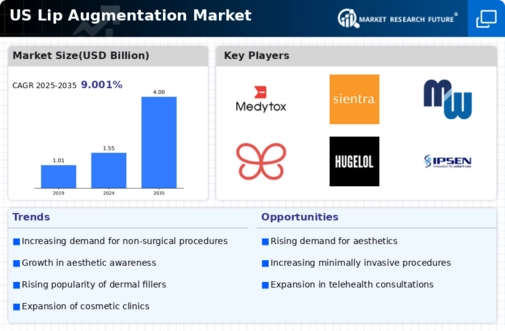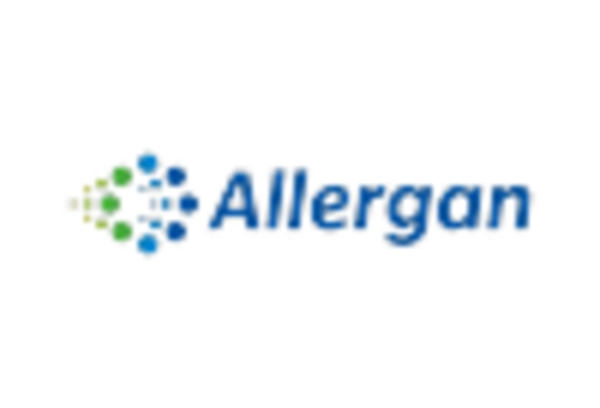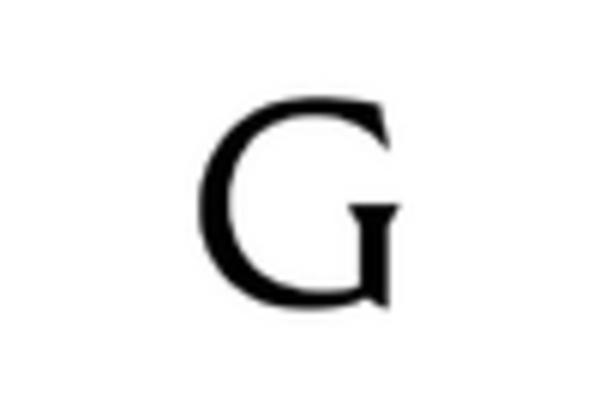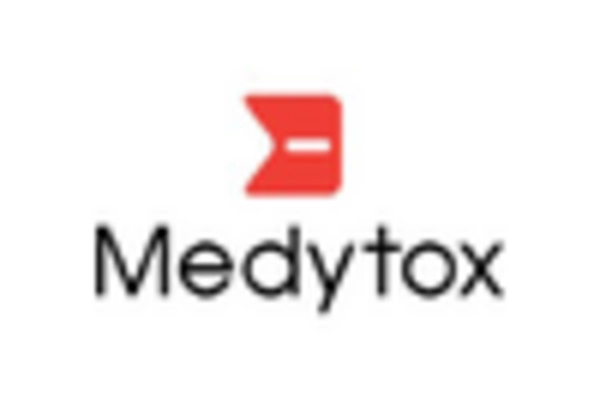The lip augmentation market exhibits a dynamic competitive landscape characterized by rapid innovation and strategic maneuvering among key players. Major companies such as Allergan (US), Revance Therapeutics (US), and Galderma (CH) are at the forefront, each adopting distinct strategies to enhance their market presence. Allergan (US), known for its flagship product Juvederm, continues to focus on innovation, investing heavily in R&D to develop next-generation fillers that promise longer-lasting results. Revance Therapeutics (US) is carving a niche with its DaxibotulinumtoxinA injection, which aims to provide a more natural look with fewer side effects, thereby appealing to a growing consumer base seeking less invasive options. Galderma (CH), with its Restylane line, emphasizes regional expansion and strategic partnerships to bolster its distribution channels, particularly in emerging markets. Collectively, these strategies contribute to a competitive environment that is increasingly focused on product differentiation and consumer-centric solutions.
In terms of business tactics, companies are increasingly localizing manufacturing to enhance supply chain efficiency and reduce costs. This approach not only streamlines operations but also allows for quicker response times to market demands. The competitive structure of the market appears moderately fragmented, with several players vying for market share, yet dominated by a few key companies that hold substantial influence. This fragmentation fosters innovation as companies strive to differentiate their offerings in a crowded marketplace.
In October 2025, Allergan (US) announced the launch of a new line of lip fillers designed specifically for enhancing lip volume while maintaining a natural appearance. This strategic move is significant as it aligns with current consumer preferences for subtle enhancements rather than dramatic changes, potentially capturing a larger share of the market. The introduction of this product is likely to reinforce Allergan's position as a leader in the sector, appealing to both new and existing customers.
In September 2025, Revance Therapeutics (US) secured a partnership with a leading aesthetic clinic chain to expand the availability of its DaxibotulinumtoxinA injection. This collaboration is crucial as it not only increases product accessibility but also enhances brand visibility in a competitive landscape. By aligning with established clinics, Revance may effectively leverage the trust and reputation of these institutions to gain consumer confidence and drive sales.
In August 2025, Galderma (CH) launched a digital marketing campaign aimed at educating consumers about the benefits of its Restylane products. This initiative reflects a broader trend towards digitalization in the market, where companies are increasingly utilizing online platforms to engage with consumers directly. By enhancing consumer awareness and understanding, Galderma is likely to foster brand loyalty and encourage informed purchasing decisions.
As of November 2025, the competitive trends in the lip augmentation market are increasingly defined by digitalization, sustainability, and the integration of AI technologies. Strategic alliances are becoming more prevalent, as companies recognize the value of collaboration in enhancing product offerings and market reach. Looking ahead, competitive differentiation is expected to evolve, shifting from traditional price-based competition to a focus on innovation, technological advancements, and supply chain reliability. This transition suggests that companies that prioritize R&D and consumer engagement will likely emerge as leaders in the market.

















Leave a Comment